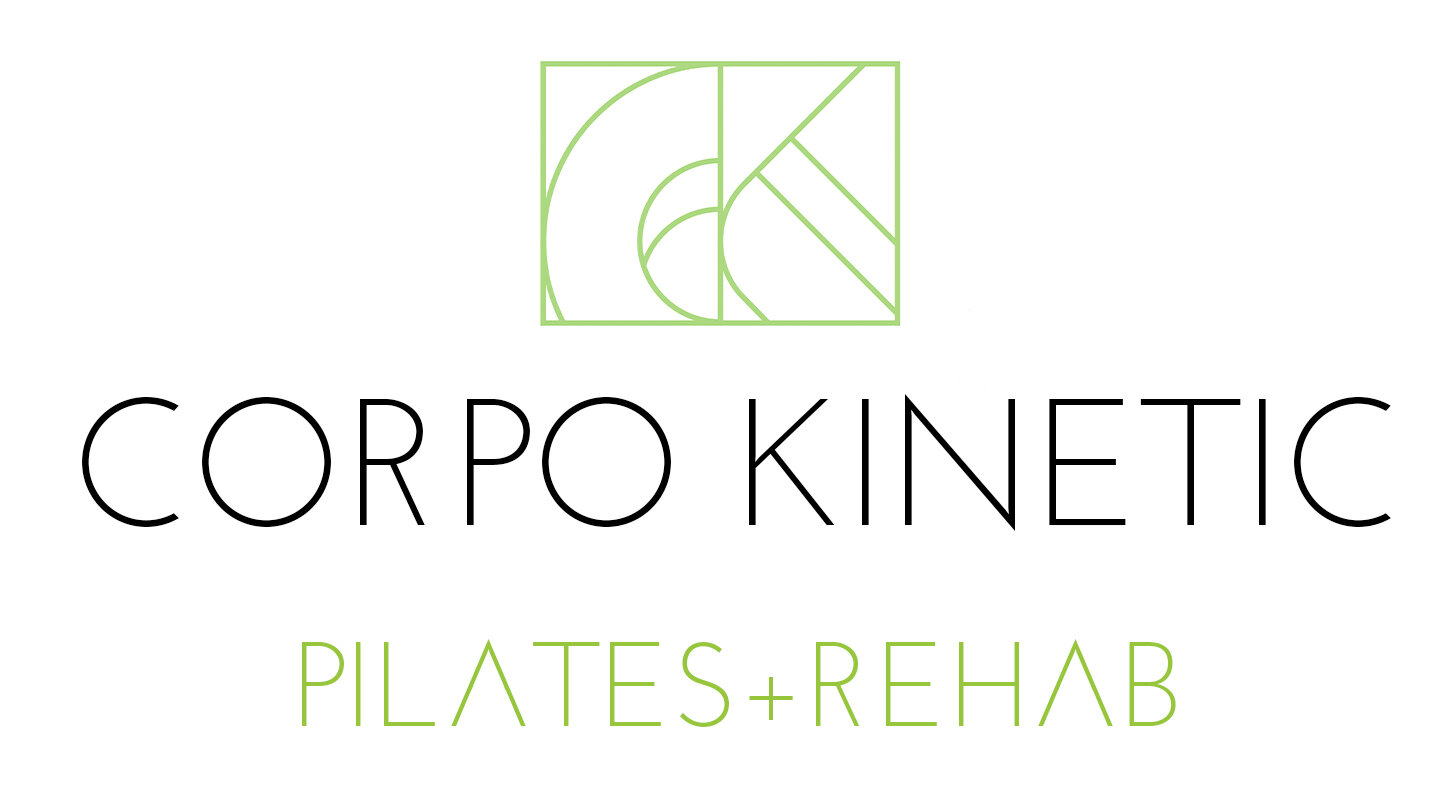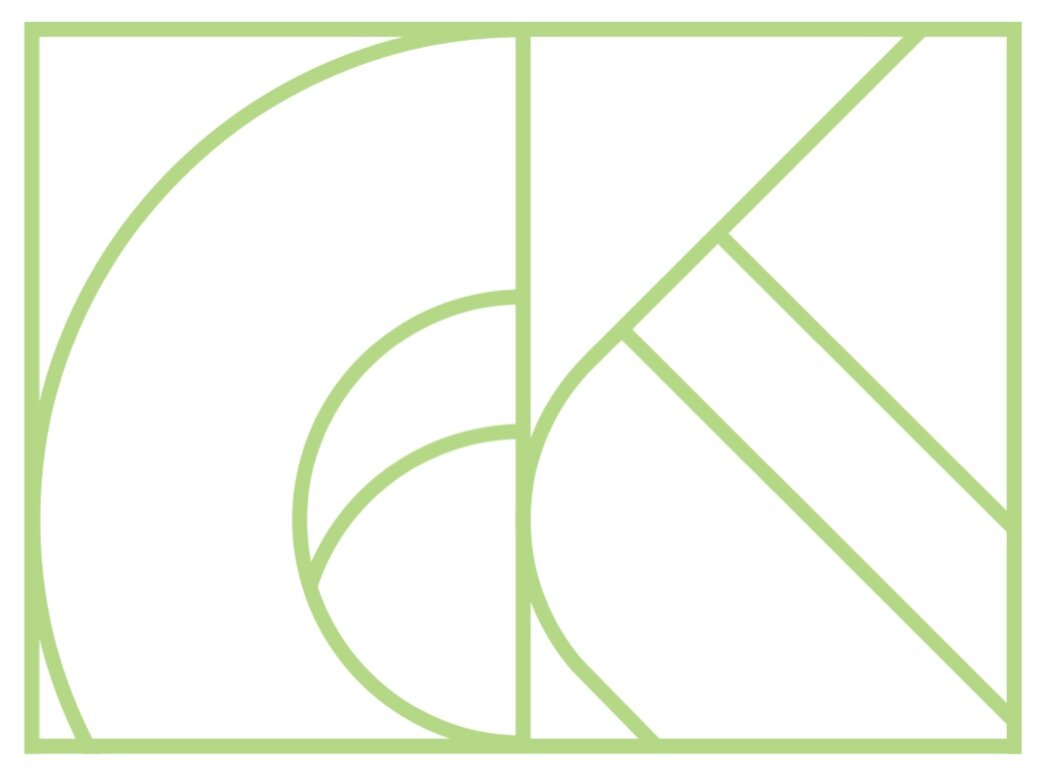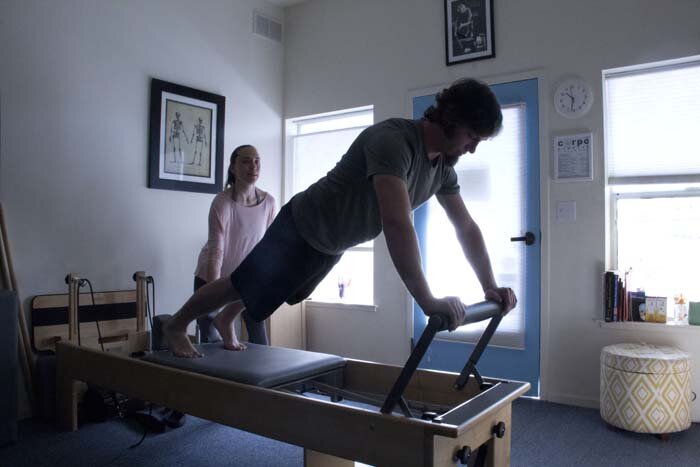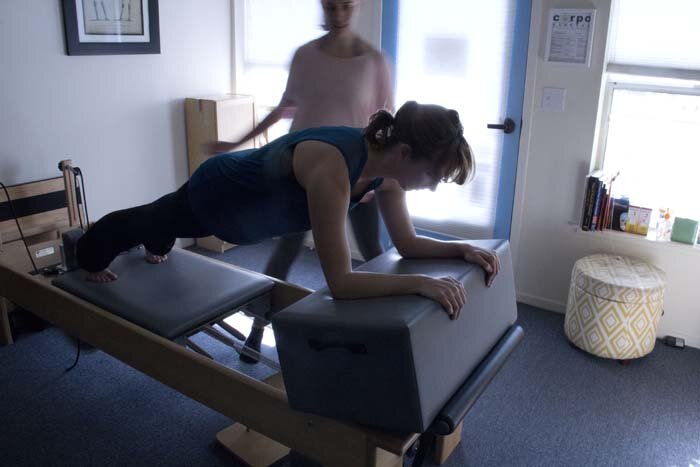Modifications for common injuries - Part I
One of the things I love about Pilates is that it is a highly versatile system of exercise, which can be gentle enough for rehabilitation, and yet challenging enough for athletic conditioning. When you want to strengthen but you’re working with an injury, you can count on your Pilates instructors to keep you safe, help you heal, and give all the other body parts a workout while we’re at it. This month, we’re focusing on how Pilates accommodates injuries. We’ll show you some ways we modify exercises to keep you safe while you strengthen, as well as highlighting how we use orthopedic bodywork and rehab-specific exercises to help the injury get better.
While rest is a vital component of recovery, Pilates is exceptionally good at keeping all of those other body parts moving while the injured part gets some TLC. In fact, working with an injury is what drew me to the Pilates system in the first place. After tearing my ACL (a major stabilizing ligament in the knee), I was looking at months of being out of my usual dance classes. I was bored, emotional, and my body missed movement like nothing else. Putting full weight on my leg hurt, but I could walk into the Pilates studio with crutches, lay down on the reformer, and still be able to strengthen and challenge the rest of my body. My sessions with my Pilates trainer lifted my mood and kept me sane while I was recovering. In the meantime, I strengthened my core and upper body so that I came back almost stronger than before the injury. Along with my highly talented surgeon who hooked me up with a new ACL, I credit Pilates with all the professional dancing I did post-recovery.
But enough about me. How do we help you and our other clients going through a similar journey? Here are a couple common areas of pain or injury we see often at Corpo Kinetic, and some ways we address them.
Low Back Pain
Low back pain is so common in our culture that it is just written out as an acronym among medical professionals: LBP. Because low back pain is often accompanied by a weak or under-active core, we tend to see a lot of clients looking to improve their back pain through Pilates. However, traditional abdominal exercises, even those done in a typical Pilates class, may not be appropriate if your back hurts, and may even end up making it worse.
Traditional Pilates Exercise: The Hundreds
The hundreds: the traditional Pilates abdominal buster we all love to hate. You will definitely feel that deep abdominal burn in this one, but if you’re not able to also recruit the inner core unit to properly stabilize your lower back, you may end up making your back pain worse.
Modified Pilates Exercise
By keeping your legs in table top, the stress of holding your legs up is much less, and you can focus on feeling the engagement of the inner core unit, which stabilizes your lower back. As you get stronger, your trainer can have you straighten the legs up to the ceiling. As you gain strength, you can work on lowering your legs with proper low back stabilization, getting closer to the full “hundreds,” pictured above.
Rehab: Orthopedic Bodywork
The muscles of the lower back often get over tight in instances of low back pain. While stretches can help, orthopedic bodywork can pinpoint and release the cause of the pain, and help reset the nervous system so that the pain is less likely to recur.
Rehab: gentle and specific Pilates exercise
With acute low back pain, learning where the inner core unit is and how to activate it is critical. Stabilizing your pelvis and lower back while balancing on the roller teaches a recruitment of the transversus abdominus, pelvic floor, and lumbar multifidi muscles, all which need to be active to progress to more advanced core strengthening.
Carpal Tunnel Syndrome
While the surge in ergonomics and postural education has helped, carpal tunnel syndrome is still considered a very common injury. Marked by a numbness or tingling in the hands, it can make any repetitive motion which involves the wrist painful, and can make it challenging to develop upper body strength without aggravating the wrists.
Traditional Pilates Exercise: Long Stretch
Pilates loves to plank, and for those looking for a good heavy-hitter exercise which can strengthen shoulders, back, core and legs all at once, this version called “long stretch” will get you there. However, if you’re experiencing carpal tunnel syndrome, this version of the exercise would be off limits due to the stress placed on the wrists.
Modified Pilates Exercise
Putting the forearms on the box takes all the pressure off the wrists, giving you all the benefits of strengthening your shoulders, back, core and legs – without aggravating your carpal tunnel syndrome.
Rehab: Orthopedic Bodywork
Carpal Tunnel Syndrome can be aggravated by too much tension on the wrist flexors and transverse carpal ligament, which then compress the space the median nerve has to pass through the carpal tunnel. By relieving tension on these structures, the space for the median nerve can be restored, reducing symptoms
Rehab: gentle and specific Pilates exercise
In some cases, weakness in the shoulder musculature can cause the wrist flexors to be overactive, leading to Carpal Tunnel Syndrome. If this is the case, cuffs can be used to take stress off the wrists during strengthening of the shoulder muscles. When using the wrist cuffs, the hands and muscles of the forearms can remain relaxed, and the work is focused where we want it – in the muscles of the shoulders.
That’s it for this month!
We hope you’ve enjoyed a look at how we modify for common injuries, as well as the glimpse at how we use orthopedic bodywork and rehab-specific Pilates exercises. Stay tuned next month when we’ll look at knee and neck pain!
Let’s Move!
Book a group class or private session to use what you’ve learned:









